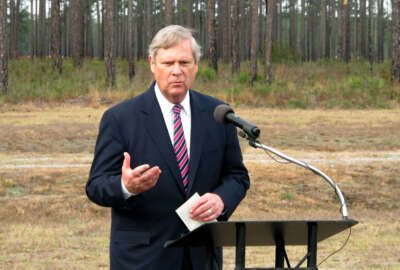
How some agencies use mission to unlock key workforce challenges
Most federal employees consistently say their agency's mission motivates them to come to work everyday. Now, some agencies say a mission-focused approach to emp...
Ask federal employees what motivates them to come to work everyday, and most consistently say it’s their agency’s mission. Some agency leaders are beginning to use mission as the driving force behind new employee engagement programs, and the approach is starting to pay off.
“The places that are improving have figured out that it’s the people who deliver the mission, and if you focus getting your people right and the mission will get delivered enthusiastically and effectively and better,” Justin Johnson, former executive director of the Chief Human Capital Officers Council and now a specialist consultant for Deloitte, said during the Partnership for Public Service’s Feb. 22 panel discussion on the Best Places to Work rankings.
The Partnership and Deloitte grouped 69 agencies and subcomponents into five mission areas this year. They compared agencies’ engagement scores with other organizations who have similar missions and responsibilities in law enforcement/border protection, public health, infrastructure, national security and energy/environment missions.
For all mission areas, the top ranking agency sat at least 20 points or more higher than the lowest ranking organization at the bottom of the list.
Many agencies, such as the Homeland Security Department for example, saw a handful of its components at both the top and bottom of the lists in multiple mission areas. The Coast Guard and Citizenship and Immigration Services held the top two spots among 15 law enforcement agencies.
Yet the department itself ranks last among seven national security agencies.
DHS is seeing some progress at the component level because it specifically focused on programs and initiatives that could spark change within those smaller agencies, said Clothilda Taylor, the department’s chief learning and engagement officer.
For example, TSA leaders visited high-traffic airports and held focus groups with employees.
“Our [Federal Employee Viewpoint Survey] in those targeted locations improved an average of 24 percent from 2015 to 2016,” Taylor said. “So don’t believe everything you hear.”
Customs and Border Protection launched a formal mentoring program, which now has 3,000 participants, she added. The agency also redesigned its training for front line supervisors. CBP improved its engagement from 49 percent to 53 percent over last year.
Taylor recognizes that DHS has and will likely continue to be in the news this year. The department hopes it can use this time in the spotlight to “step up.”
“At FDIC during the housing trouble, it was their time,” Johnson said. “They could either crash and burn or they could really engage and step up and it’s their time. With a lot of the things that [are] happening, perhaps some of the DHS bureaus [can] focus and it’s their time to shine.”
New DHS Secretary John Kelly made it known early on that he’s interested in the department’s workforce, Taylor said.
That kind of leadership commitment has been invaluable for other agencies as well.
The Centers for Medicare and Medicaid elevated the Office of Human Capital, which now reports directly to the administrator.
“It focused the organization that we care about human capital,” said Patrick Conway, the acting CMS administrator. “It’s part of the executive team. We care about training, retention, hiring, etc.”
Over time, CMS has tried other methods and has seen continuous improvement over time. The agency is now tied with the Food and Drug Administration for second place among 14 public health organizations.
CMS first made its Federal Employee Viewpoint Survey (FEVS) results public across the entire agency.
Now, CMS is focusing its efforts on coaching, mentoring and communication.
“We’ve coached and mentored over 900 people,” Conway said. “We heard from first line managers that division directors, and this is true in most organizations, was the hardest possible job to manage that group of 10 or 20. We invested a lot in managing at the front line level, because that’s what actually matters to the day-to-day employee.”
Conway has found that communication, especially during the transition year, has been especially important.
Conway said he spoke to 6,000 of his 6,500 employees in small groups in the 72 hours following the election.
“One, I said I’m going to be here Jan. 21, and I will try to help all of us through the transition. Two, we have a mission. We’re serving people each and every day, and it’s important to do that mission well.”
The Commerce Department has also seen some of its components consistently rank high and others struggle.
Commerce Chief Human Capital Officer Kevin Mahoney does his own analysis of the FEVS results every year. He looks at scores for each question and develops a manageable list of areas where he’d like to improve. Then, he asks his employees to weigh in with a survey.
“I take that feedback and out of that, I pick two or three things for us to focus on, and I found that that’s a more effective way of getting at what’s of interest to the employees,” Mahoney said.
Mahoney says simply asking his colleagues what matters most to them has been a successful starting point. The Economic Development Administration, a small agency inside the Commerce Department, found success that way. It was ranked last among 300 subcomponents. In 2016, the agency rose to the 212th spot, he said.
“They haven’t really done anything earth-shattering, except they’ve sat down with their employees and they said, ‘how do we fix this?'”
Copyright © 2024 Federal News Network. All rights reserved. This website is not intended for users located within the European Economic Area.
Nicole Ogrysko is a reporter for Federal News Network focusing on the federal workforce and federal pay and benefits.
Follow @nogryskoWFED





